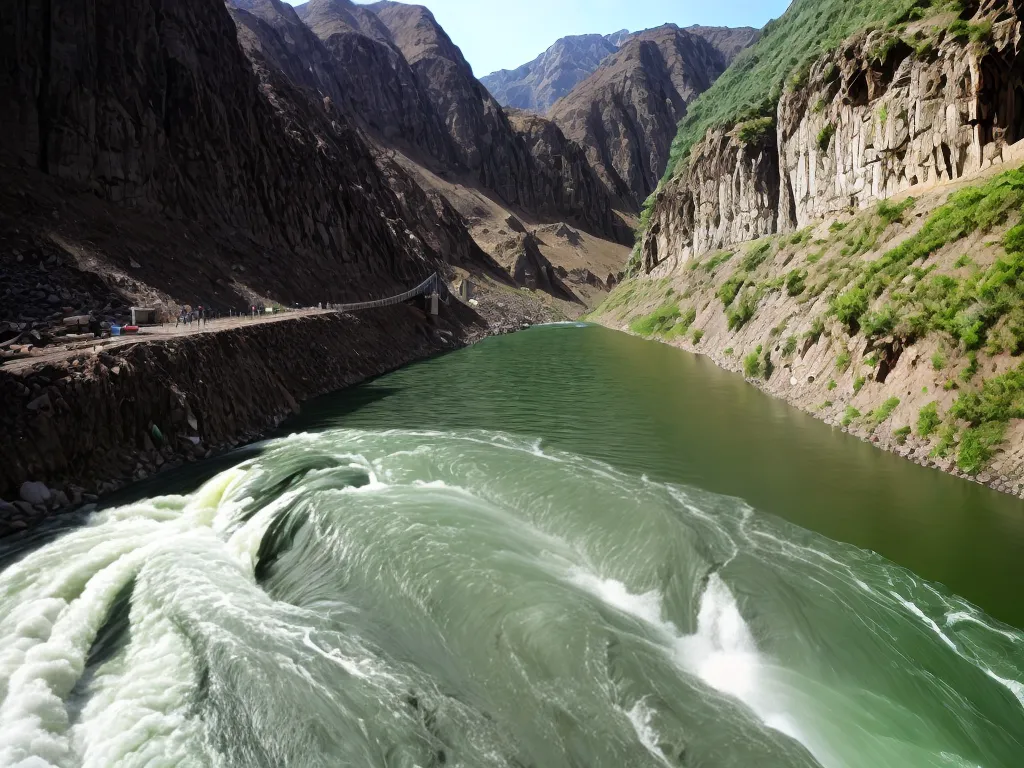
Introduction
Small-scale hydropower projects certainly have appeal - they can provide renewable energy without massive dams and reservoirs. However, as I have researched the topic more in-depth, I have come to realize that small-scale hydropower has several major impracticalities and disadvantages compared to larger hydropower projects. In this article, I will discuss these drawbacks in detail.
High Costs Per Kilowatt
One of the biggest disadvantages of small-scale hydropower is the high costs per kilowatt of energy produced. While large hydropower dams can produce electricity for around 4-8 cents per kWh, small hydropower often costs 12-30 cents per kWh or more. This is due to the lack of economies of scale. Each small project must go through feasibility studies, obtain permits, purchase turbines and other equipment, and construct civil works like intake structures and powerhouses. When amortized over a small amount of generation, the fixed costs per kWh are quite high.
Some real world examples help illustrate the cost challenges of small hydropower:
-
A 3 MW project in California cost $9 million, or $3,000 per kW of capacity. This resulted in electricity costs of 25 cents/kWh.
-
A 45 kW project in Colorado cost $775,000, or over $17,000 per kW. The power cost 30 cents/kWh.
As these examples show, the kilowatt costs of small hydro are often 5-10x higher than large hydro projects. The high expenses make the power uncompetitive with other renewable sources like wind and solar in many locations.
Low Capacity Factors and Generation
In addition to high project costs, most small hydropower facilities have low annual capacity factors of 25-40%. This is due to seasonal fluctuations in streamflow. With a small impoundment, the project cannot store water to smooth out the seasonal variability.
Compare this to large reservoir-based hydropower which often achieves 50-80% capacity factors by storing water for year-round generation.
The low capacity factors of small hydro mean the annual energy generation is modest for the investment made. For example, a 5 MW small hydro facility with a 30% capacity factor will only generate about 13 GWh per year. A 50 MW wind farm can exceed 100 GWh annually at a lower cost per kWh.
Adverse Environmental Impacts
While small hydropower avoids some of the ecosystem impacts of large dams, it can still have significant environmental drawbacks including:
-
Altered stream hydrology - Small dams change the timing and amount of water downstream, affecting riparian habitats.
-
Fish migration barriers - Without proper fish passage facilities, small hydro projects can restrict fish movement and access to habitat.
-
Sediment disruption - Dams prevent downstream sediment transport, leading to erosion in some areas and deposition in others.
-
Reduced flows - Hydropower operations often divert water out of the natural channel, dewatering sections of river.
Environmental rules usually require small hydro projects to mitigate these impacts. However, the mitigation measures add to project expenses and can reduce generation.
Other Challenges
Some other disadvantages and impracticalities of small hydropower include:
-
Remote locations - Good sites are often far from transmission infrastructure, increasing costs.
-
Lack of data - Feasibility studies are limited by lack of streamflow and site data. Much speculation is required.
-
Permitting difficulties - Multi-year permitting processes increase development costs and uncertainty.
-
Dry year risks - Low precipitation years can drastically cut generation.
-
Competing uses - Agricultural, recreational and ecological uses often have priority over hydropower.
Conclusion
In summary, while small-scale hydropower has certain advantages and niche applications, it faces major economic and practical challenges for widespread deployment. The high project costs, low capacity factors, environmental impacts, and other disadvantages often make it an impractical renewable energy source compared to solar, wind, geothermal and even large hydropower. Careful feasibility analysis is required to identify suitable locations where small hydro can provide competitive, low impact renewable generation.